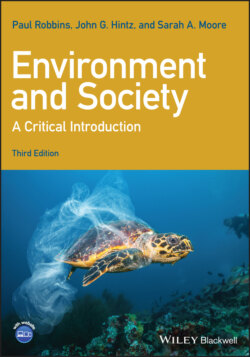Читать книгу Environment and Society - Paul Robbins - Страница 34
The Potential Violence and Injustice of Population-centered Thinking
ОглавлениеGiven that population may be an effect of other economic and political processes, that affluence and consumption have a large hand in determining the environmental impacts of populations of any size, and that some growth in population may lead to increased rather than decreased resources, what are the implications of thinking about environmental problems in strictly demographic terms?
For critics of population control, the implications are serious indeed. For such critics, the history of population politics and efforts at control are fraught with violence and injustice. Consider, for example, the Indian emergency during the period of Indira Gandhi’s rule in the 1970s. In 1975 Mrs. Gandhi declared martial law and made the end of population growth, through dramatic measures, including mass sterilization camps, the rationing of food and services contingent on family size, and even forced sterilization of some villages and slums, a central part of state policy. Most of these draconian measures were enacted on groups with the least political power, moreover, including marginal caste communities and the urban poor. International neo-Malthusian observers heralded the effort, with some American and European observers calling for logistical support of all kinds in this war on overpopulation (Hartmann 1995).
Yet none of these measures slowed or halted India’s population growth, which is only now slowing decades later as a result of complex political and economic factors, including women’s rights and access to education. All that these efforts achieved was a horrible violence to those poor and unfortunate enough to be caught up in the panic and a general distrust among all Indians for any discussion of population at all. So, the persistence of Malthusian thinking in the international press, in coercive government population policies, and in environmental analyses of various kinds appears to many critical observers to be dangerous indeed, as it distracts attention away from other driving forces (in economy, society, or politics) of environmental degradation. It also tends to unjustly vilify places and people who may have little or nothing to do with ecological change or negative environmental impacts (Robbins and Smith 2017). While there may be a billion people in India, for example, the United States, with one-quarter that population, emits more than five times the amount of carbon dioxide gas – a key driver of global warming (see Chapter 11).
More pointedly, critics maintain that making the politics of the environment a politics of population directs policy action, blame, and social control specifically onto women and their bodies. As Elizabeth Hartmann argues in her critical book Reproductive Rights and Wrongs, by seeking to restrict population, neo-Malthusians effectively seek to restrict women, and yet:
the solution to the population problems lies not in the diminution of rights, but in their expansion. This is because the population problem is not really about human numbers, but a lack of basic rights. Too many people have too little access to resources. Too many women have too little control over their own reproduction. Rapid population growth is not the cause of underdevelopment; it is a symptom of the slow pace of social reform. (Hartmann 1995, p. 39)
